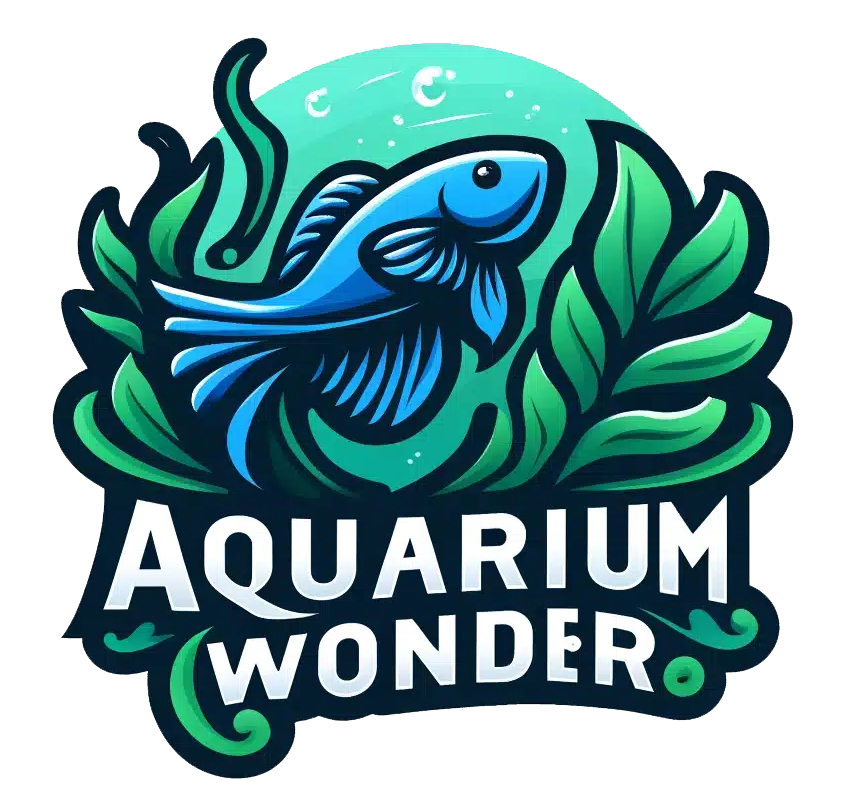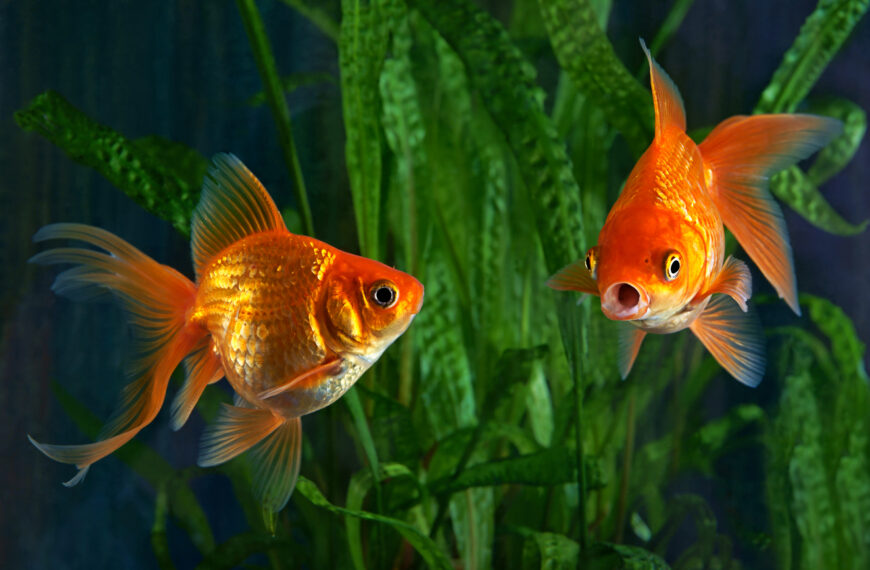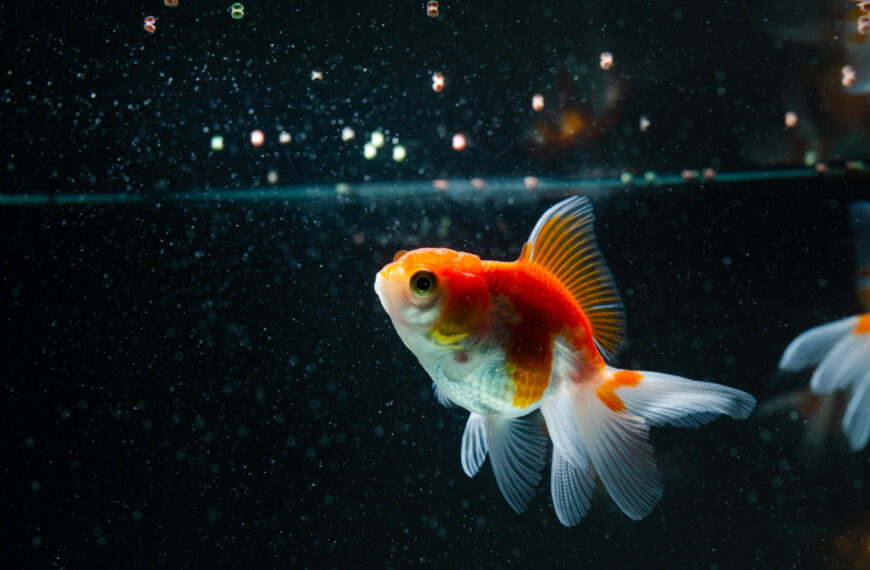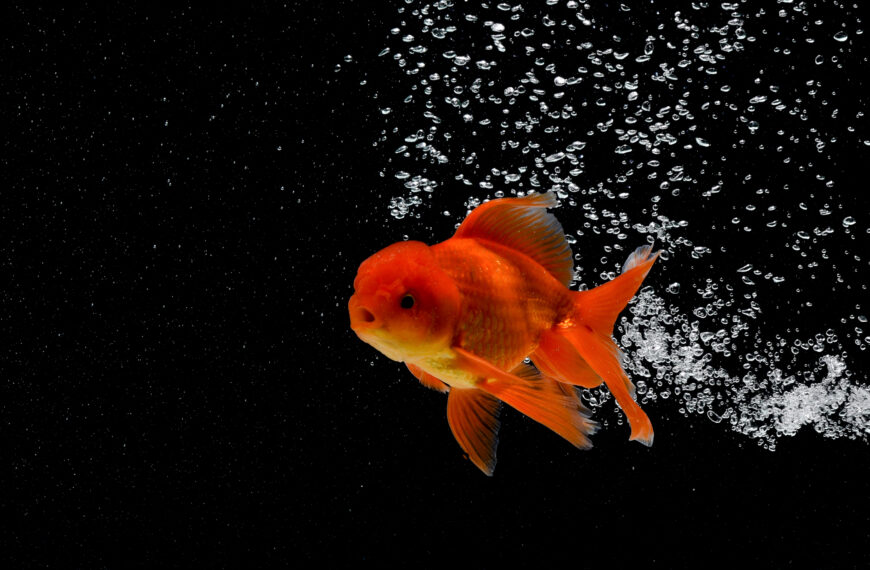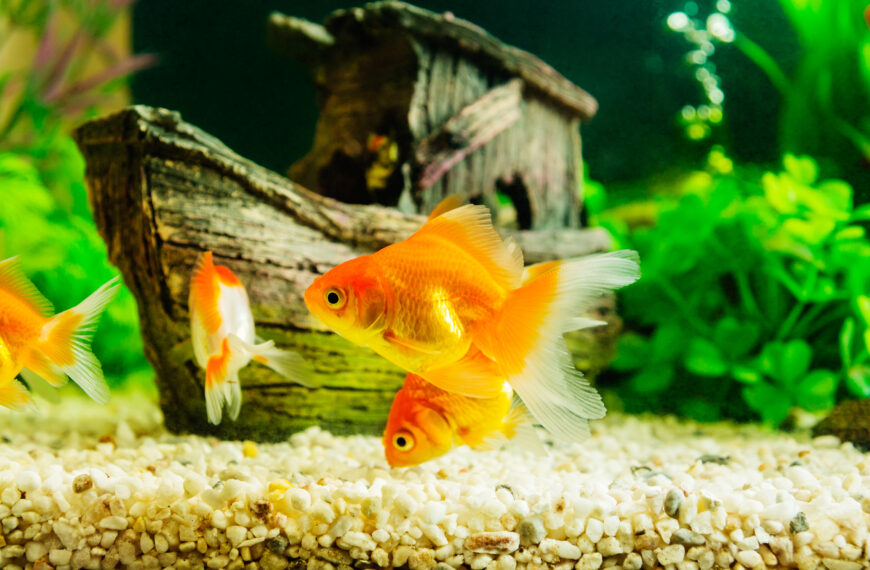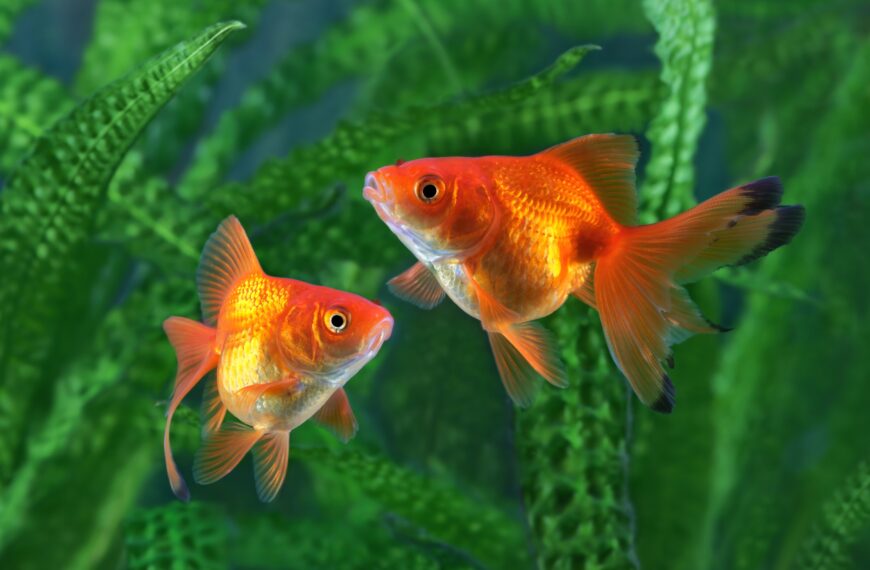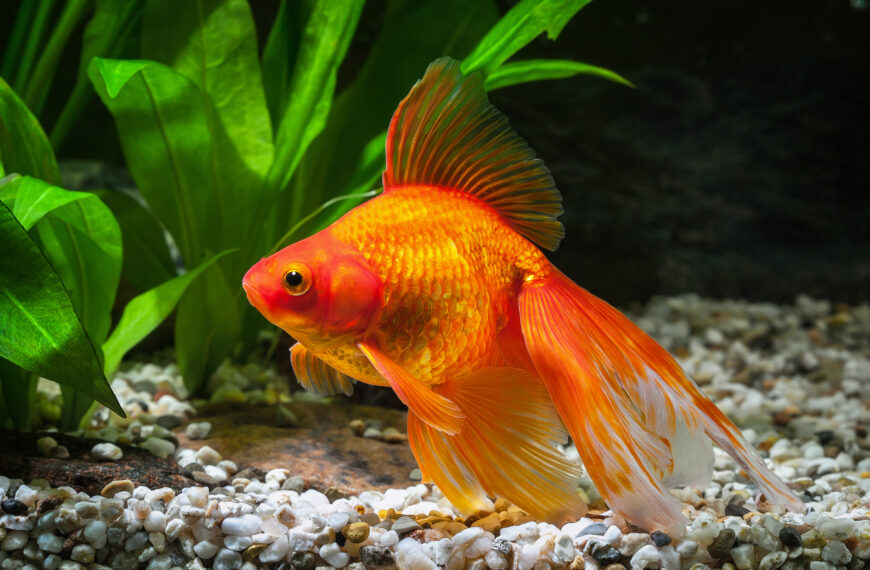People have been recommending all kind of tank sizes for goldfish. From tiny to garden-pond-dimensions. So once and for all: what size aquarium is best for a goldfish? I did the research, we’ll go through all you need to know.
Quick Answer
Although the rule of thumb is that for every inch of fish, you should have two gallons of tank space, goldfish are active swimmers and messy fish, which means they need significantly more space. Your average goldfish that is between two and three inches should have about 10 gallons of tank space.
Of course there’s more to it than this. Continue reading to learn more about goldfish tank dimension requirements.
Goldfish Tank Size: What To Look For
To determine how large of an aquarium you need for your goldfish, you first need to know how big goldfish get. How big a goldfish gets is partially determined by the type of goldfish.

First, we have the common goldfish, which in the wild grows to an average of about 10 inches in length, although some specimens have been known to grow as large as 14 inches.
However, in a small home aquarium, goldfish rarely grow larger than two or three inches at the most, with some specimens reaching up to six inches on very rare occasions.
You then have fancy goldfish, which are often significantly smaller than regular or common goldfish, and rarely grow longer than one or two inches in home aquariums. In my experience, most people prefer common goldfish, so this will be my main focus for today.
What Tank Size for a Goldfish?
On average, you should provide your goldfish with a tank of roughly 10 gallons in size. Therefore, if you have a pair of goldfish, you should aim for a tank that is no less than 20 gallons.
Now, you might think that this sounds a little excessive for a fish that usually doesn’t grow longer than two or three inches. However, as you’ll see below, there are a few different reasons why you need a relatively large space for these not so large fish.
Something you may have heard is that a common rule of thumb is that for every inch of fish you have, you should have two gallons of tank space. This means that if you have a two inch long goldfish, a space of four gallons should suffice, and so on and so forth.
While it is technically true that this amount of space would most likely suffice for a goldfish, especially if you maintain the tank properly, it’s certainly not the ideal.
That rule, having two gallons of tank space for every inch of fish, is generally considered to be the absolute minimum.
However, for goldfish both fish to live comfortably, even a small two inch goldfish, a tank of roughly 10 gallons is recommended. Let’s move on and find out why you need such a large aquarium for these small fish.
Why Do Goldfish Need Relatively Big Tanks?
Alright, so if the general rule of thumb is that each inch of fish only needs two gallons of water, why am I recommending that a regular goldfish has at least 10 gallons of aquarium space? There are actually a few good reasons!
They Are Active Swimmers
First and foremost, goldfish are fairly active swimmers. These are not fish that like to just float in the water all day long doing nothing.
They often swim back and forth in their aquariums, and they enjoy exploring different areas of the tank. If you have more than one goldfish present, they may even race around the tank and play with each other. Active fish need a lot of space.
They Like to Explore Plants and Decorations
As mentioned above, goldfish also like to explore and check out different areas of the tank, including all of your different decorations, plants, rocks, pieces of driftwood, and more. It is therefore recommended that you put a good deal of plans, decorations, and driftwood in the aquarium.
However, to fit all of these items, you also need to have a fairly large tank. Remember, you want to add all of these things into your goldfish tank, while still leaving enough open water for them to race around it.
They Are Messy Eaters
Something else to keep in mind about goldfish is that they are fairly messy eaters. They tend to leave a lot of uneaten fish food laying around in the tank, which is not good for water quality.
That said, the more water you have compared to a minimal number of goldfish, the more that uneaten fish food will spread out in the water, therefore affecting the overall water chemistry less than if you had a very small tank.
The more water you have, the less that uneaten food will cause problems in the tank, and the less it will force your filter to work overtime. In general, this is also beneficial for the health of your fish, because good water quality equates to good fish health, at least in part.
You’ll Want More Than One
The other reason why a relatively large tank is recommended for goldfish is quite simply because you usually want to keep more than one. Goldfish like companionship and are ideal to keep in pairs.
Other Goldfish Tank Requirements
Besides tank size, there are a few other important requirements you’ll have to meet for your goldfish to thrive.
This generally applies to various water parameters, such as pH levels, mineral contents, levels of ammonia and nitrites, and temperature.
Let’s take a quick look at each one so you can house your goldfish in the best possible conditions to allow it to be happy and healthy.
pH
The pH level, otherwise known as the acidity of the water, is very important for goldfish. If your goldfish is not kept in waters that have the proper pH levels, they may start to become sluggish, lose their appetite, and exhibit poor health in general.
An ideal pH level for goldfish is between 6.5 and 7.5, while keeping in mind that a perfect seven 7.0 means that the water is neutral.
Temperature
The temperature of the water is another very important factor to keep in mind. Generally speaking, most goldfish do well in moderately cool waters ranging between 20 Celsius and 23 Celsius, or between 68 degrees Fahrenheit and 74 degrees Fahrenheit.
This temperature is generally considered high enough to encourage healthy growth and development, but is not so high that it will result in low oxygen levels in the water or result in your fish becoming stressed out.
Therefore, you may require an aquarium thermometer like these to keep track of the temperature, as well as an aquarium heater.
Ammonia and Nitrites
Admittedly, this is a bit of a trick, because goldfish cannot handle ammonia at all, as is the case for most fish. The ideal level of ammonia for any goldfish tank is total zero. As for nitrates the levels of these should not exceed 40 parts per million.
Keep in mind that your aquarium filter, the biological filtration aspect, breaks down ammonia into nitrates, and then nitrates into nitrites, which are much less harmful.
Of course, what I’m getting at here is that you need to have a bit aquarium filter that engages in at least both high quality mechanical and biological filtration, as both are required to effectively remove ammonia and other such compounds from the water.
Dissolved Minerals
Something else to consider is the dissolved mineral content in the aquarium water for your goldfish. As you might know, some fish prefer harder water and some like softer water.
For the record, hard water means that the water contains a lot of dissolved minerals, such as calcium, magnesium, and others. Goldfish in general prefer relatively hard water, somewhere around 120 parts per million.
In fact, goldfish require decent amounts of magnesium and calcium to survive, which is why hard water is actually fairly beneficial for them.
Conclusion
I really hope that this guide has provided you with all of the information you need about your goldfish and the ideal tank size.
Remember that although two gallons of water for every inch of fish is a general rule of thumb, goldfish are active swimmers and require significantly more space. If you can give each goldfish around 10 gallons of tank space, they should be fairly happy.
Also, remember to keep the pH levels, dissolved minerals, ammonia levels, and the temperature all within their ideal ranges. If you do all of these things, you should have no problems keeping your goldfish alive for as long as possible.
